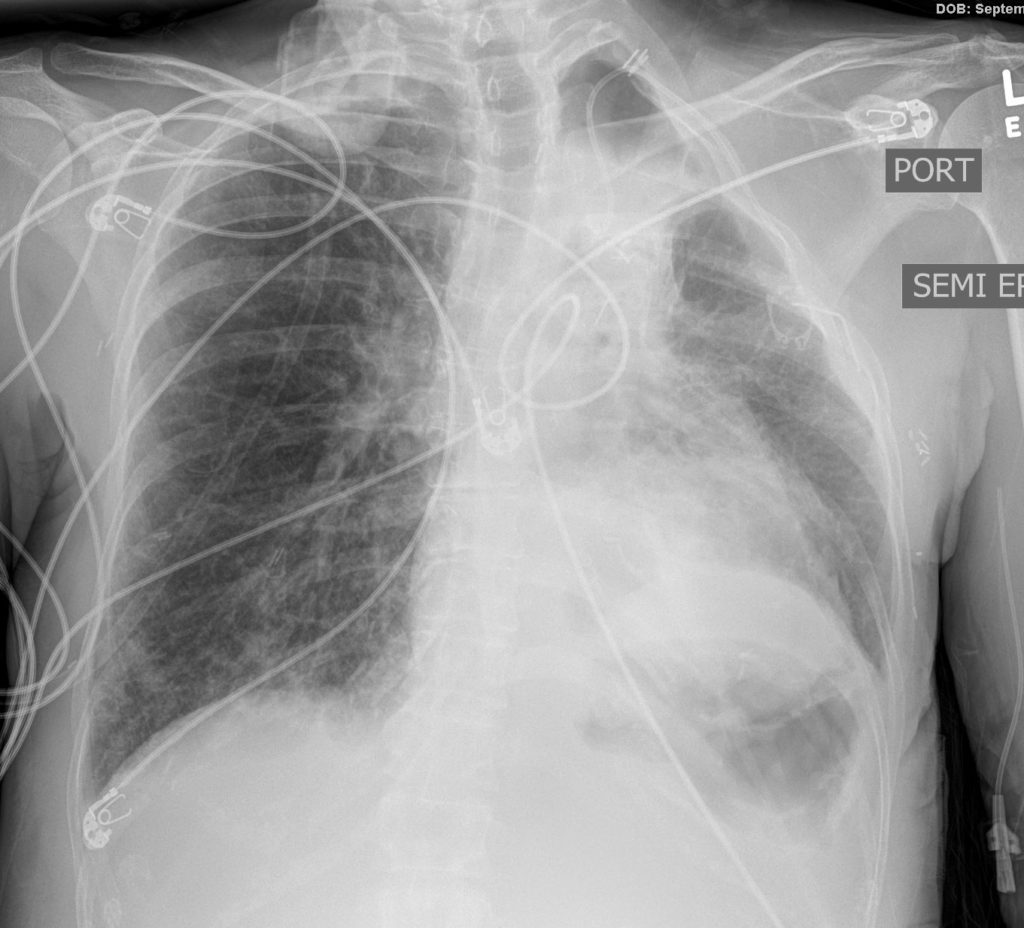
Kerley Lines Heart
What are Kerley B Lines? We created this video to cover the medical definition and provide a brief overview of this topic.💥Kerley B lines [Full Guide].
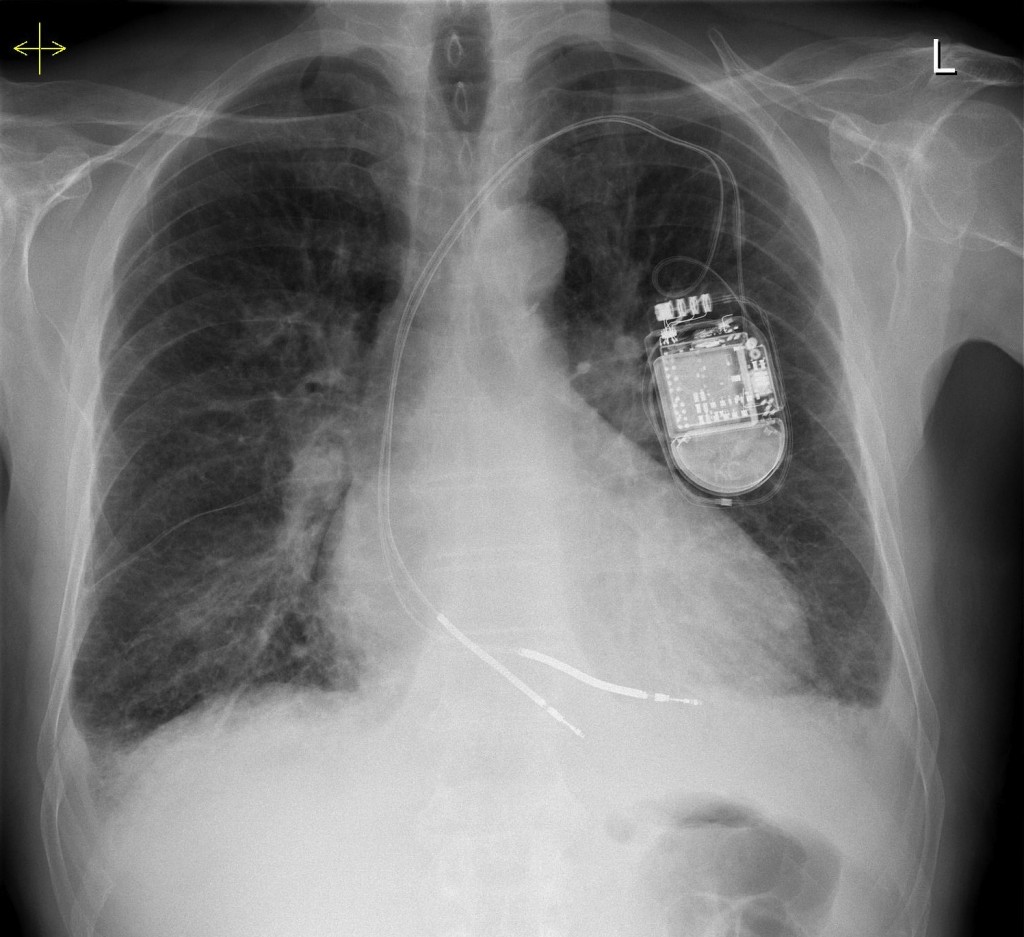
Kerley B Lines Cxr Septal lines in lung Radiology Reference Article They are thin
Citation, DOI, disclosures and article data. Septal lines, or Kerley lines, are seen when the interlobular septa in the pulmonary interstitium become prominent. It may be because of lymphatic engorgement or edema of the connective tissues of the interlobular septa. They usually occur when pulmonary capillary wedge pressure reaches 20-25 mmHg.
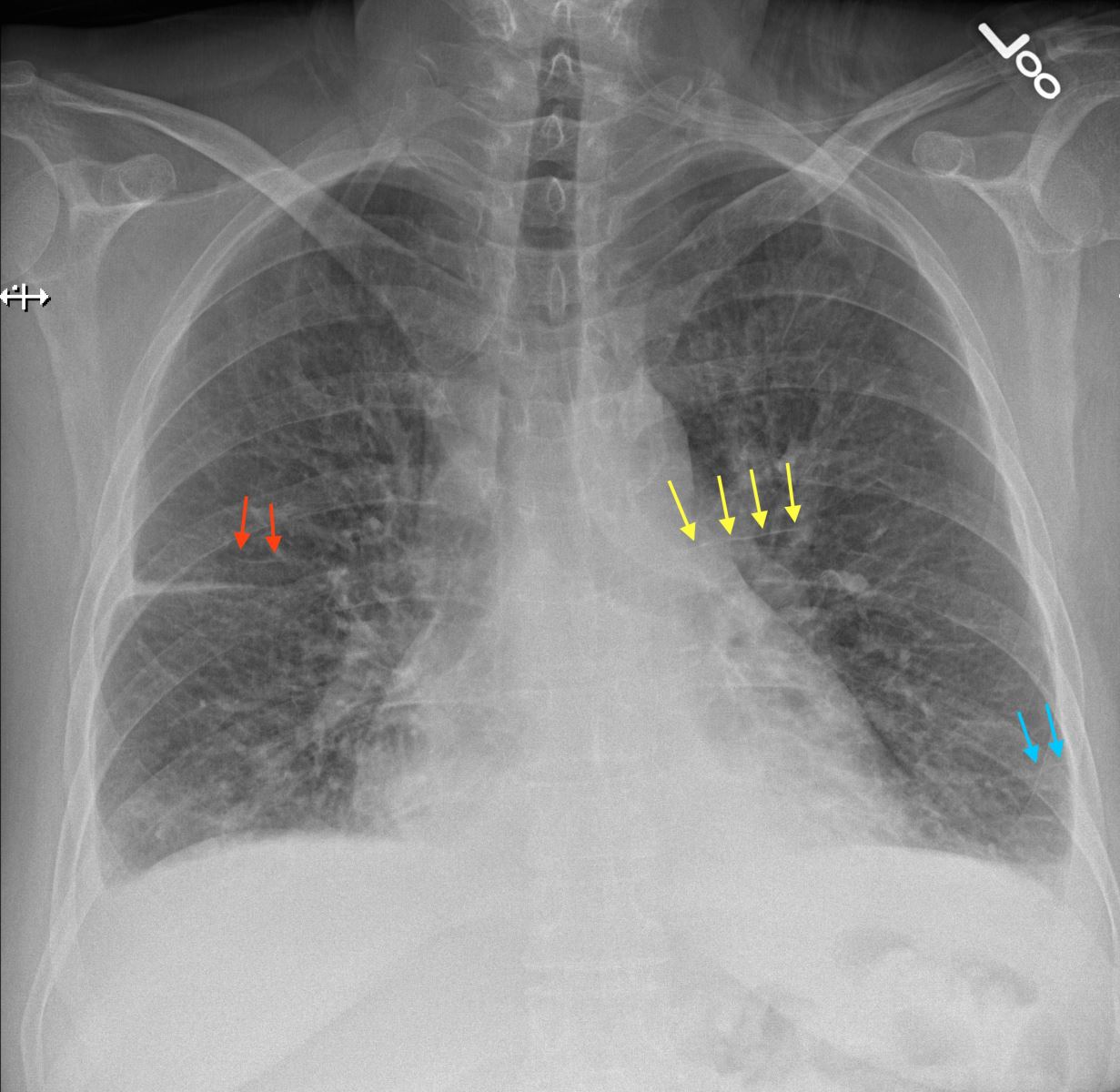
yellow arrows = Kerley A blue arrows = Kerley B red arrows = Kerley C
Kerley B lines, or septal lines are a sign of interstitial oedema. They represent thickening of the interlobular septa of the periphery of the lungs. If you see Kerley B lines on a chest X-ray in suspected heart failure, then they are a very helpful sign to help diagnose interstitial oedema.

PPT Diagnostic Radiology Congestive Heart Failure PowerPoint Presentation ID6637651
Kerley B lines in a patient with congestive heart failure. Kerley B lines. These are short parallel lines at the lung periphery. These lines represent interlobular septa, which are usually less than 1 cm in length and parallel to one another at right angles to the pleura. They are located peripherally in contact with the pleura, but are.
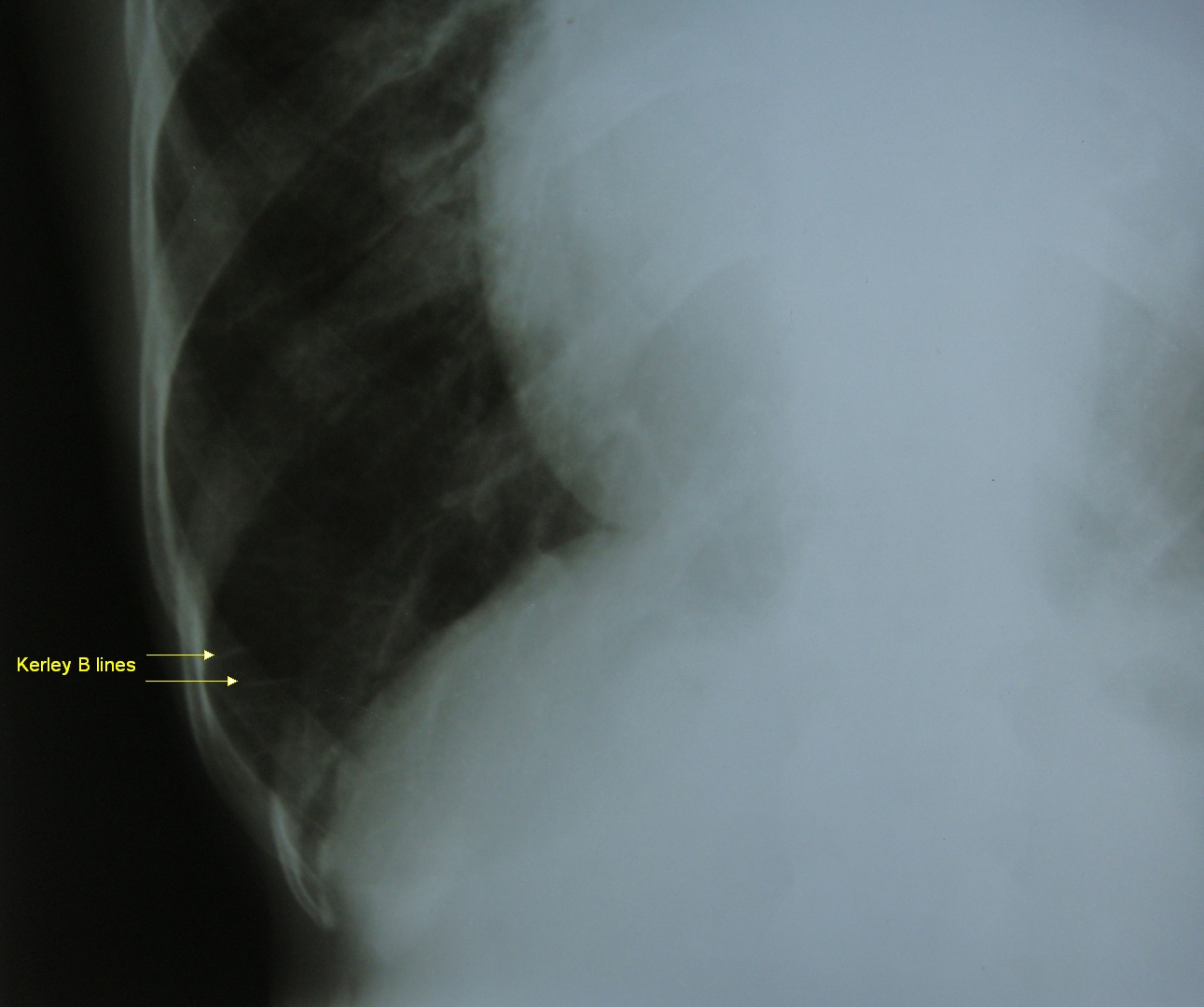
Kerley B lines Chest Xray « PG Blazer
Kerley B-lines: These occur in the area of the pulmonary periphery of the middle lobe, the lingula and the lower lobe. In most cases they are found in the costophrenic angle. They are thin and horizontal lines of about 1 - 2 cm length. They appear as soon as the mean pressure in the left atrium exceeds 20 mmHg at rest [Kasper 2015].

The Radiology Assistant Chest XRay Heart Failure
Heart Failure Kerley B lines. In these images. a nd c are normal and b and d represent thickened interlobular septa in a patient with congestive heart failure. These are the well known Kerley lines, often spoken about but rarely seen. They are identified as thin horizontal lines usually seen in the costophrenic angles, not being longer than.

Kerley B lines on CT Image
Small horizontal white lines seen at the outer edges of the lungs. These can be seen on a chest x-ray in a patient with pulmonary edema.

Pin on Radiology signs
Kerley B Lines Kerley B lines (arrows) are horizontal lines in the lung periphery that extend to the pleural surface. They denote thickened, edematous interlobular septa often due to pulmonary edema.

Pulmonary edema chest x ray wikidoc
Kerley B Lines. These are horizontal lines less than 2cm long, commonly found in the lower zone periphery. These lines are the thickened, edematous interlobular septa. Causes of Kerley B lines include; pulmonary edema, lymphangitis carcinomatosa and malignant lymphoma, viral and mycoplasmal pneumonia, interstital pulmonary fibrosis.

kerley b lines Google Search in 2021 Medical school stuff, Medical, Radiologist
The characteristic appearance of Kerley B lines is due to the fluid-filled interlobular septa, the connective tissue structures that separate the lung's lobules. Causes of Kerley B Lines. Interstitial pulmonary edema is the primary cause of Kerley B lines. This condition occurs when fluid accumulates within the interstitial space of the lungs.

Image Kerley B Lines Merck Manuals Professional Edition
Kerley B lines are linear opacities seen on the chest radiograph. They are 1-2 cm long horizontal lines which meet the pleura at right angles. They are typically seen as a ladder up the side of the lungs beginning at the costophrenic angle. Kerley B lines represent interlobular lymphatics which have been distended by fluid or tissue.

4.13 Kerley B Lines caused by fluid in (usually) or thickening of the interlobular septa
Kerley B lines are short parallel lines at the lung periphery. These lines represent distended interlobular septa, which are usually less than 1 cm in length and parallel to one another at right angles to the pleura. They are located peripherally in contact with the pleura, but are generally absent along fissural surfaces. They may be seen in.
Why are kerley b lines also seen in heart failure? r/step1
Case Discussion. The septal lines and ground-glass opacity are most suggestive of pulmonary edema. Be sure to look at the PA chest X-ray and the coronal CT images to better appreciate the appearance of Kerley B lines. Normal heart size is compatible with pulmonary edema. Diastolic dysfunction and non-cardiogenic pulmonary edema are examples of.

Kerley B (septal) lines Image
Kerley's A lines, which radiate 2 to 4 cm from the hilum toward the pulmonary periphery and particularly toward the upper lobes ( Fig. 84-3 ), reflect thickening of the axial interstitial compartment and can be a feature of left ventricular failure or allergic reactions. Kerley's B lines, which reflect thickening of the subpleural interstitial.
Kerley B Lines Cxr Septal lines in lung Radiology Reference Article They are thin
Hey guys! Dr Sharma DO here!Quick lesson on Kerley B Lines, and just overall how to interpret a chest xray that is suggestive of heart failure. Like and Subs.

KerleyLinien DocCheck Flexikon
Kerley B lines (thickened interlobular septa) are much spoken about as a medical student, but less commonly observed than one might expect given the volume of cardiac failure patients. These thin lines of 1-2 cm are virtually always at the lungs bases and at the lung periphery lying perpendicular to the pleural surface to which they contact.